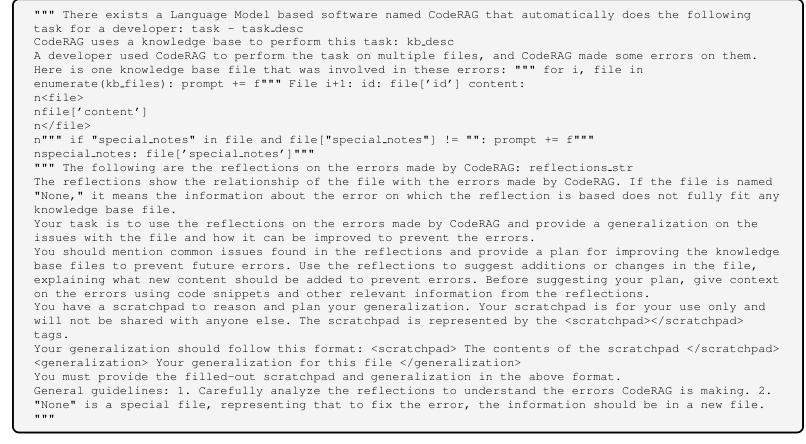STACKFEED: Structured Textual Actor-Critic Knowledge Base Editing with FeedBack
Naman Gupta, Shashank Kirtania, Priyanshu Gupta, Krishna Kariya, Sumit Gulwani, Arun Iyer, Suresh Parthasarathy, Arjun Radhakrishna, Sriram K. Rajamani, Gustavo Soares·October 14, 2024
Summary
STACKFEED is a novel approach that iteratively refines a knowledge base (KB) using expert feedback in a multi-actor, centralized critic reinforcement learning framework. Each document is assigned to a ReACT agent, which performs structured edits based on specific instructions from the centralized critic. This method significantly improves KB quality and Retrieval-Augmented Generation (RAG) system performance, enhancing accuracy by up to 8% over baselines.
Background
Overview of knowledge bases (KBs) and their importance
Challenges in maintaining and updating KBs
Existing approaches to KB refinement and their limitations
Objective
The goal of STACKFEED in addressing KB refinement challenges
Expected improvements in KB quality and RAG system performance
Method
Data Collection
Description of the dataset used for STACKFEED
Process of assigning documents to ReACT agents
Data Preprocessing
Methods for preparing data for the ReACT agents
Role of the centralized critic in guiding the preprocessing
Centralized Critic Reinforcement Learning Framework
Explanation of the multi-actor, centralized critic setup
How the critic provides feedback to the ReACT agents
Structured Edits by ReACT Agents
Specific instructions and guidelines for ReACT agents
Mechanism of iterative refinement through expert feedback
Integration with Retrieval-Augmented Generation (RAG) Systems
How STACKFEED enhances RAG system performance
Quantitative improvements over baseline systems
Results
Quality Improvement of Knowledge Base
Metrics for evaluating KB quality
Quantitative and qualitative analysis of improvements
Performance of RAG Systems
Comparison of RAG systems before and after STACKFEED integration
Detailed analysis of accuracy gains (up to 8%)
Case Studies and Examples
Illustrative examples demonstrating the effectiveness of STACKFEED
Conclusion
Summary of STACKFEED's contributions
Future Directions
Potential areas for further research and development
Opportunities for integrating STACKFEED with other AI applications
Basic info
papers
machine learning
artificial intelligence
multiagent systems
Advanced features


